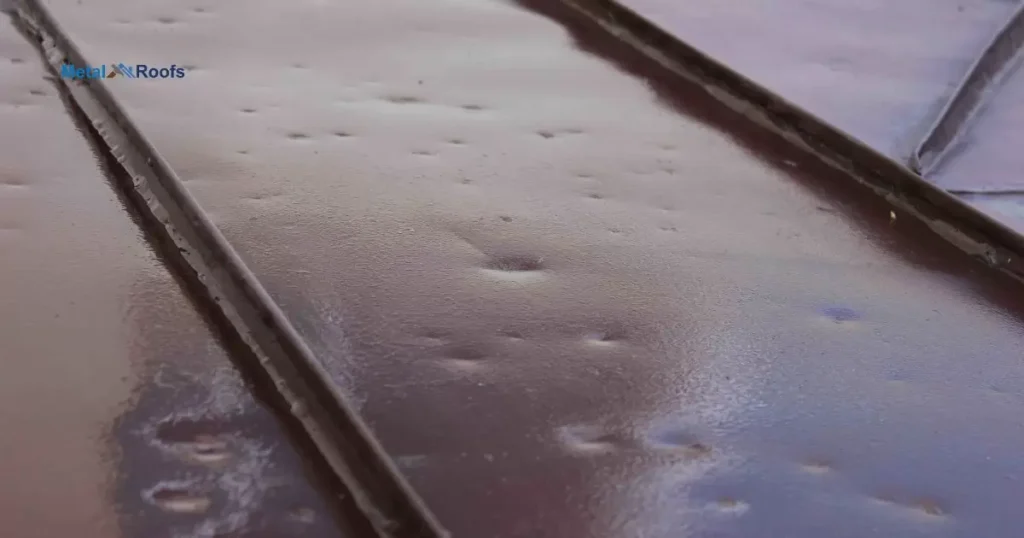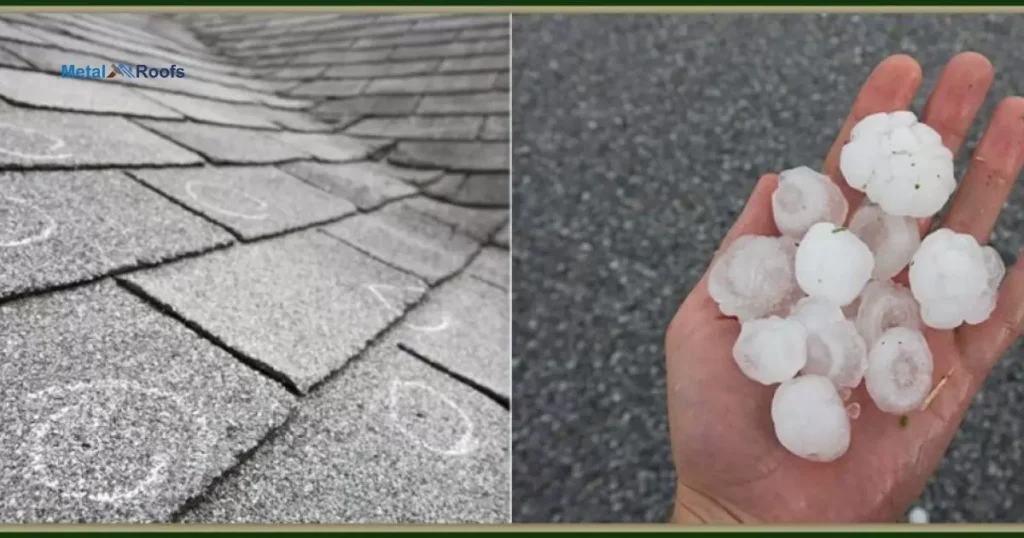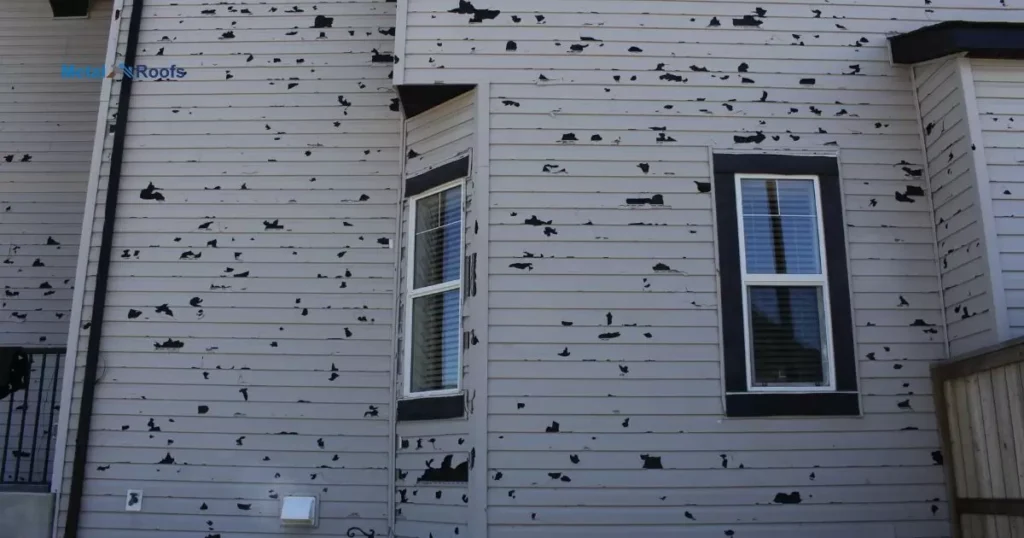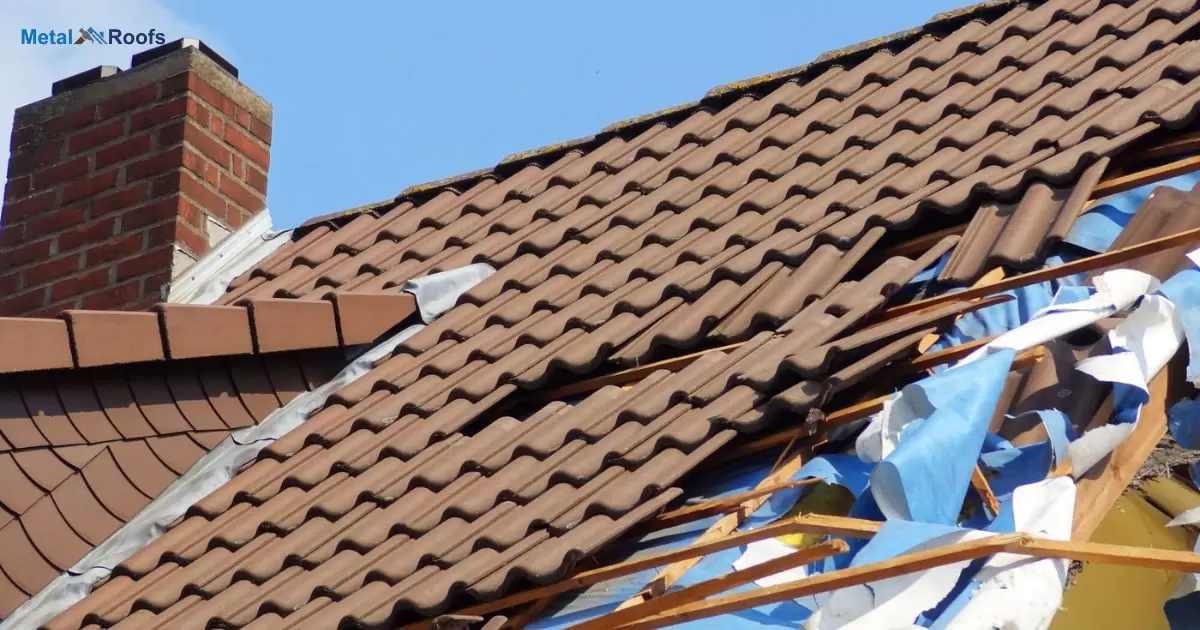Hail can cause dents, cracks, and holes in metal roofs. The damage depends on hail size, wind speed, and roof type. Inspect for leaks after storms. Consider impact-resistant metal for hail-prone areas. Proper installation and maintenance can minimize hail damage to metal roofs.
Can hail damage a metal roof? Yes, it can. Hail can dent, crack, or puncture metal roofs. The severity depends on hail size and wind speed. Proper installation and maintenance reduce risks. Impact-resistant metals are ideal for hail-prone regions.
Metal roofs resist hail better than other materials. Small hail may cause dings or dents. Large hailstones can crack or puncture panels. Steeper slopes increase impact damage. Regular inspections are essential after storms.
Key Takeaways
- Hail can dent or puncture metal roofs.
- Metal roofs are more resistant to hail damage than other materials.
- Severity depends on hail size and roof condition.
- Proper installation reduces vulnerability.
- Regular maintenance helps prevent significant damage.
Myths about Metal Roofing and Hail Damage
Metal roofs are often believed to be immune to hail damage. While they’re more resistant, they’re not invincible. Large hailstones can dent or puncture metal roofs, especially during severe storms. Proper installation and maintenance help reduce the risk of damage.
Some think all metal roofs dent easily. The severity of hail damage depends on factors like hailstone size and roof material. While metal roofs are more durable, they’re not entirely impervious to hail. Regular inspections can detect and address any damage promptly.
Testing Standards for Hail Impact
These standards ensure roofs can withstand hailstones. They assess factors like size, speed, and density of hailstones. Manufacturers adhere to these standards to certify their products’ durability.
Compliance ensures roofs protect against hail damage, enhancing safety. Testing standards instill confidence in roofing materials, including components like a gutter apron on existing roof, promoting community resilience.
Hail Damage Waivers from Insurance Companies

Insurance companies offer hail damage waivers, which protect homeowners from repair costs due to hailstorms. These waivers are typically included in comprehensive homeowners insurance policies. They ensure coverage for damages inflicted by hail, including dents or punctures on roofs.
Homeowners need to review their insurance policies to understand the extent of coverage for hail damage. Some policies may require additional endorsements for full coverage. It’s crucial to communicate with insurance agents to clarify any uncertainties regarding coverage limits and deductible amounts.
Understanding Hail Damage on Metal Roofs
Metal roofs are tougher than many other types, but they’re not invincible. The extent of the damage depends on factors like hail size and roof condition.
In severe hailstorms, large hailstones can dent or puncture a metal roof. However, with proper installation and maintenance, the risk of hail damage can be minimized. Metal roofs offer more durability compared to materials like asphalt shingles, making them better equipped to withstand hail impact.
Types of Metal Roofing and Their Resistance to Hail
Metal roofing is known for its durability and resistance to various environmental factors, including hail. Here are some common types of metal roofing and their resistance to hail:
Steel Roofing: Steel roofing is durable and offers good resistance to hail due to its strength, although the thickness and quality of the steel can affect its resilience.
Aluminum Roofing: Aluminum roofing is lightweight and resistant to corrosion, providing decent hail resistance, although it may dent more easily compared to steel.
Copper Roofing: Copper roofing is highly durable and has excellent resistance to corrosion. While it may dent upon significant impact, its natural patina can help conceal minor hail damage.
Zinc Roofing: Zinc roofing offers good corrosion resistance and durability. It provides decent resistance to hail, although it may dent upon significant impact.
Galvalume Roofing: Galvalume is a coated steel product that combines the corrosion resistance of aluminum with the strength of steel. It provides good resistance to hail and other environmental factors.
Repairing and Replacing Metal Roofs After Hail Damage

When hail damages a metal roof, repairs become necessary. Dented or punctured areas need fixing promptly to prevent further issues. Replacement might be needed if the damage is extensive.
Repairing a metal roof after hail damage involves assessing the extent of the damage, removing dented panels, and replacing them with new ones. Proper installation ensures the roof’s integrity is restored, protecting the building from potential leaks or structural problems. Regular maintenance can help identify and address hail damage early, prolonging the lifespan of the metal roof.
Preventing Hail to Metal Roofs
To prevent hail damage to metal roofs, consider installing impact-resistant metal roofing materials. These can withstand hail better than traditional options. Regular inspections and maintenance help identify and fix any vulnerabilities before hail strikes.
Another effective strategy is adding a protective coating to the metal roof surface. This coating acts as a barrier against hail impact, reducing the risk of damage. By taking proactive measures, you can significantly reduce the chances of hail causing harm to your metal roof.
Damage to Other Roofing Materials
| Roofing Material | Damage from Hail |
| Asphalt Shingles | Cracks, leaks |
| Wood Shakes/Shingles | Cracking, splitting |
| Clay/Concrete Tiles | Chipping, cracking |
| Slate Roofing | Cracks, fractures |
| Synthetic Roofing | Cracks, breaks |
| Metal Roofing | Dents, punctures |
Hail can cause significant damage to other roofing materials like asphalt shingles. During a hailstorm, the impact of hailstones can crack or break the shingles, leading to leaks and water damage inside the building. AHail can loosen the granules on the surface of the shingles, reducing their effectiveness and lifespan.
The force of hailstones can crack or split these materials, compromising the integrity of the roof. Repairing or replacing damaged roofing materials can be costly and may require professional assistance. It’s essential to inspect the roof after a hailstorm to assess any potential damage and take prompt action to prevent further issues.
Hail Damage and Building Codes

Hail damage can impact buildings and influence building codes. Hailstorms can cause dents and punctures in roofs, including metal ones. Building codes may require certain roofing materials or reinforcements to withstand hail.
Roofing materials like asphalt shingles can be vulnerable to hail damage. Building codes might specify materials with higher resistance to hail impacts. These codes aim to enhance the durability and safety of buildings against natural hazards like hailstorms.
Frequently Asked Questions
What does hail damage look like on a metal roof?
Hail damage on a metal roof appears as dents or indentations. These marks can vary in size and depth depending on the severity of the hailstorm.
What is the biggest problem with metal roofs?
The biggest problem with metal roofs is their susceptibility to denting from hail or falling debris. Proper installation and maintenance can mitigate this issue.
Can hail break metal?
Yes, hail can break metal if it’s large and forceful enough.
Conclusion
Metal roofs offer excellent hail resistance compared to other materials. However, severe hailstorms can still cause dents, cracks, or punctures. Proper installation and maintenance boost durability. Impact-resistant metals are best for hail-prone areas. Routine inspections after storms are crucial.
If hail damage occurs, repairs are often possible for minor dents or cracks. Major damage may require panel replacement. Timely repairs prevent leaks and further deterioration. Consult professionals for assessment and repair options. Proper care extends the lifespan of a metal roof.











